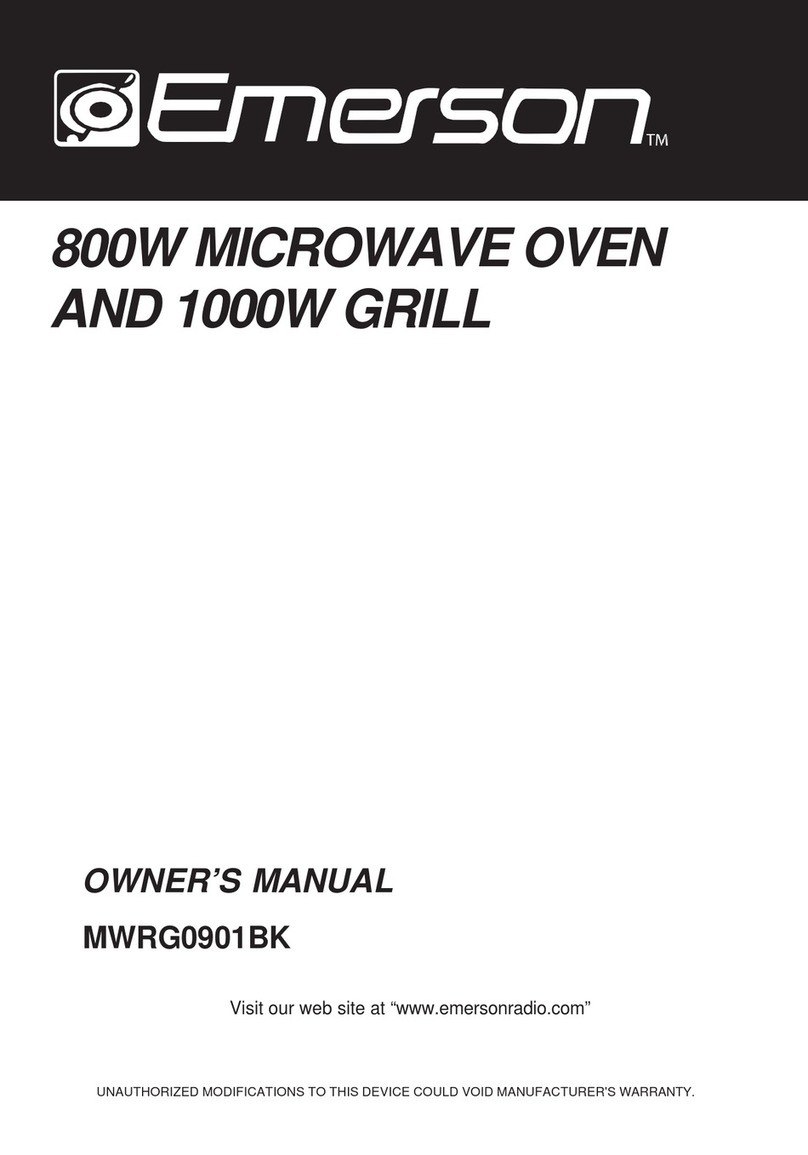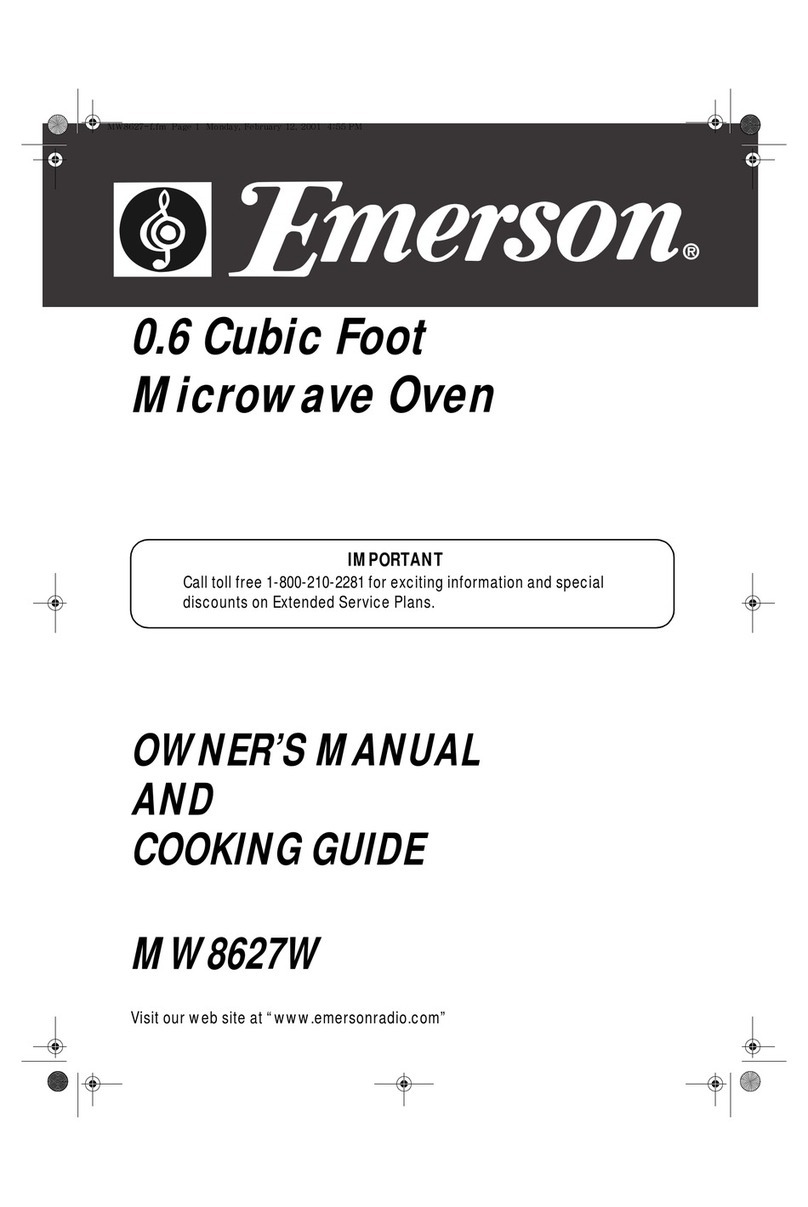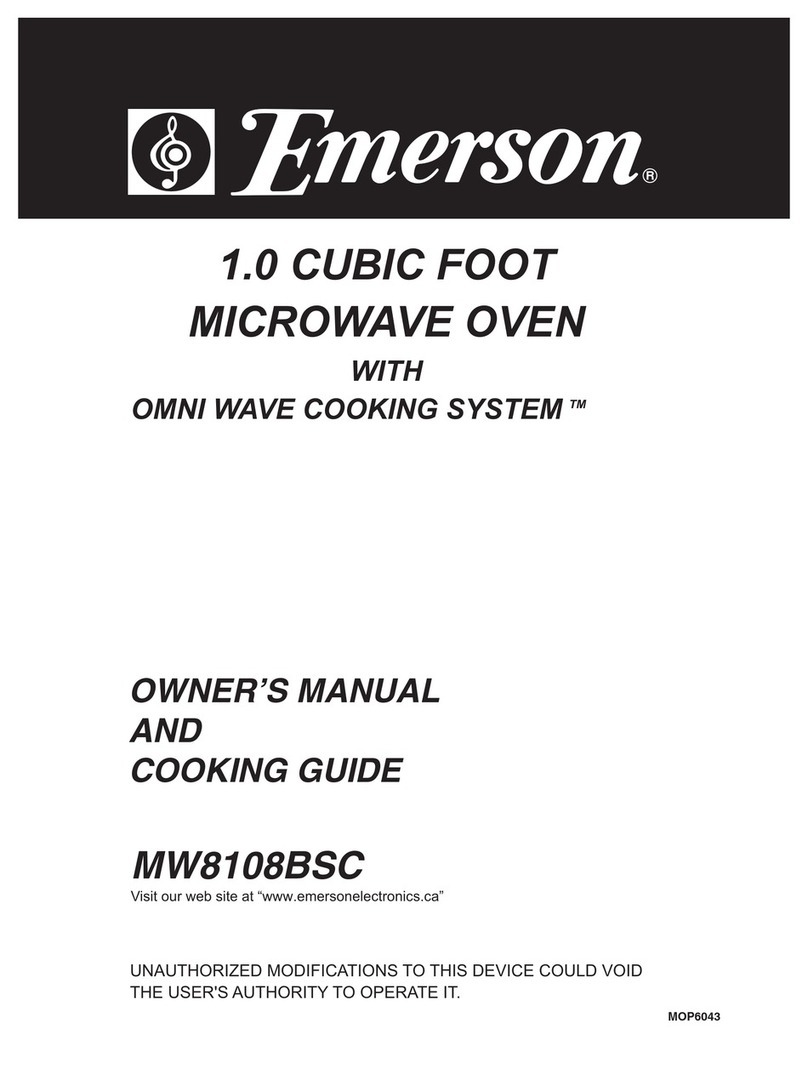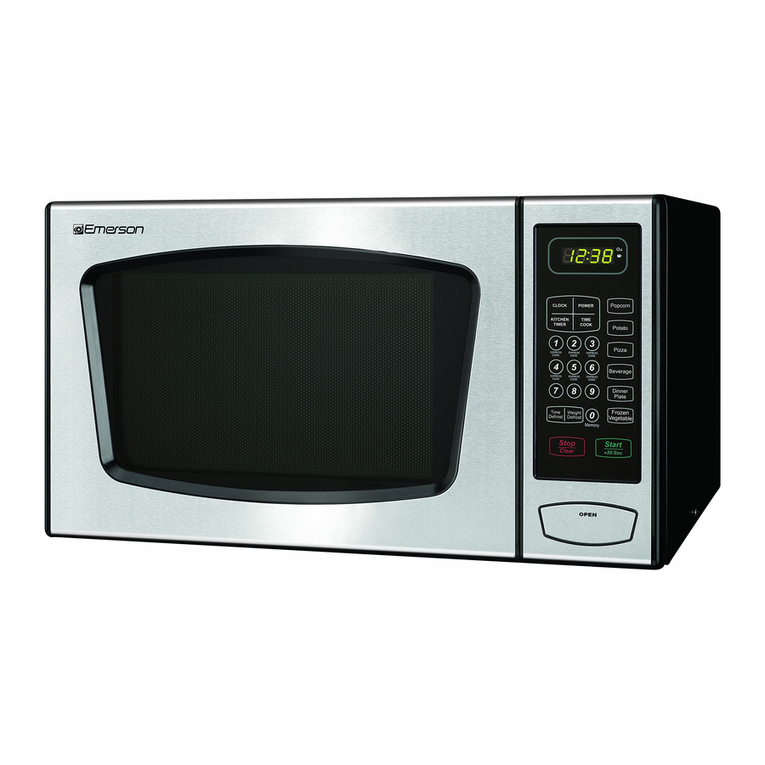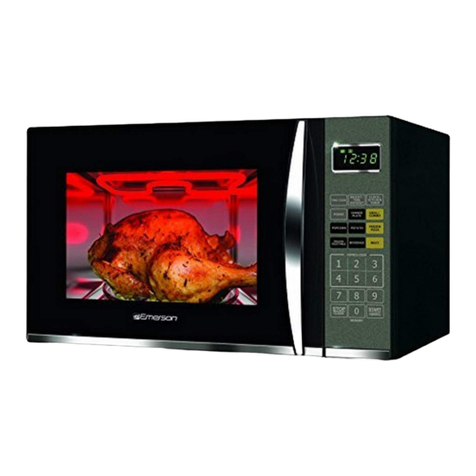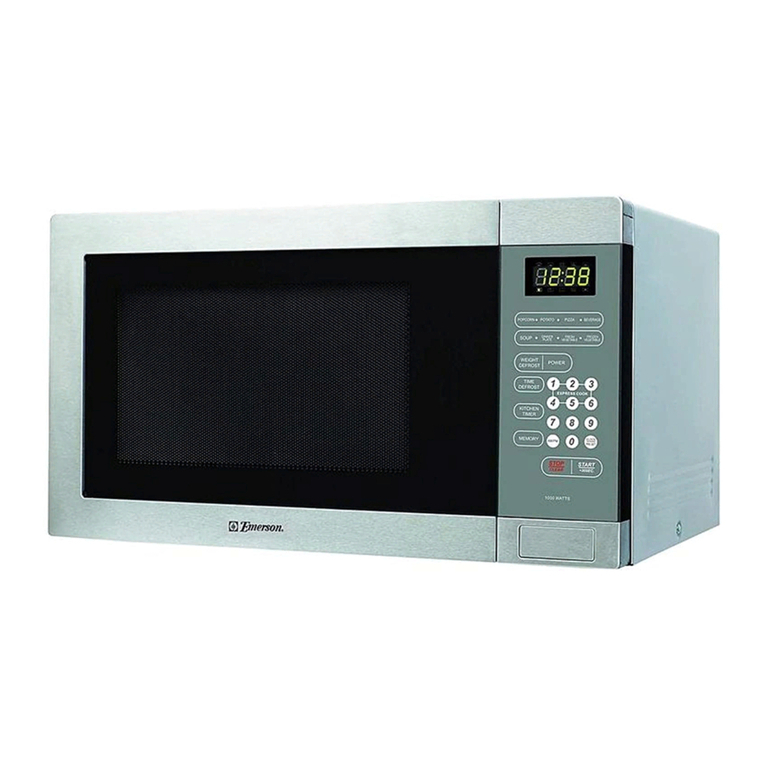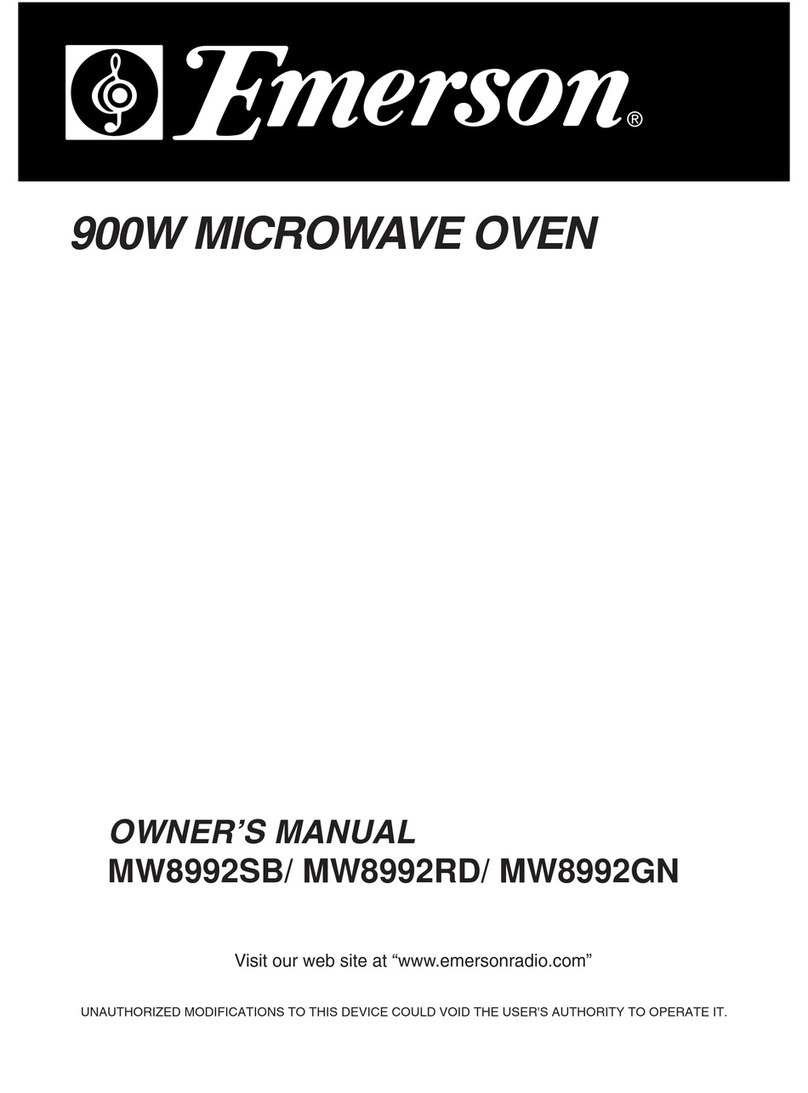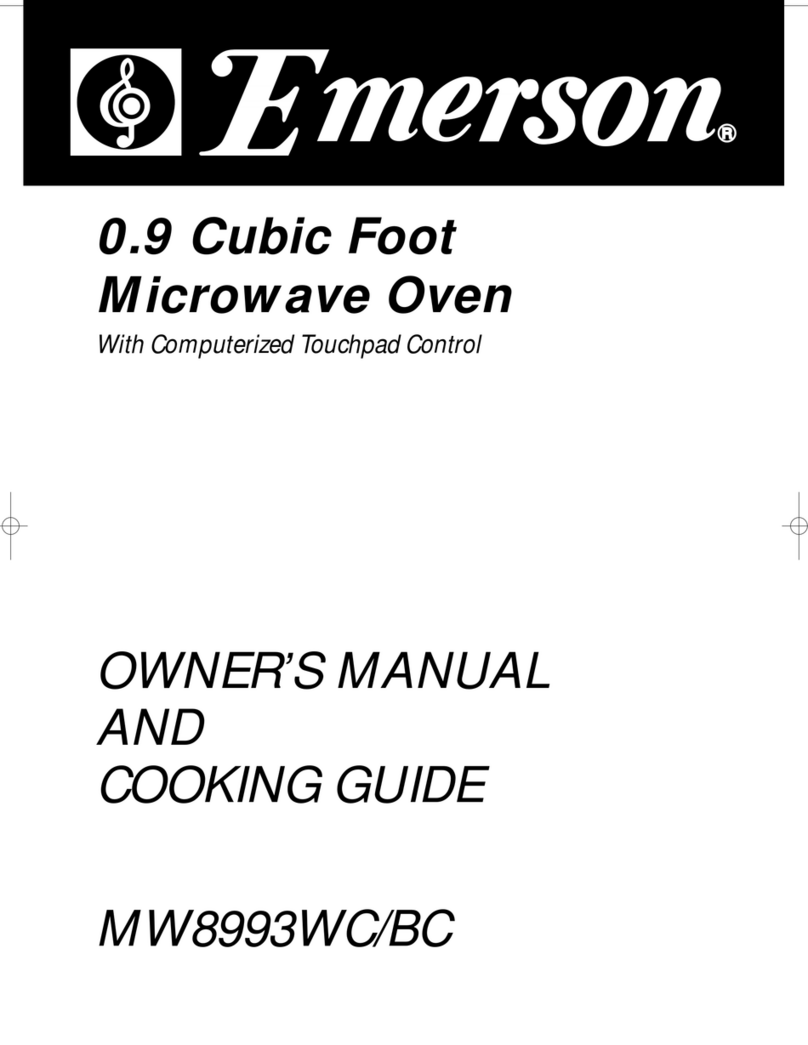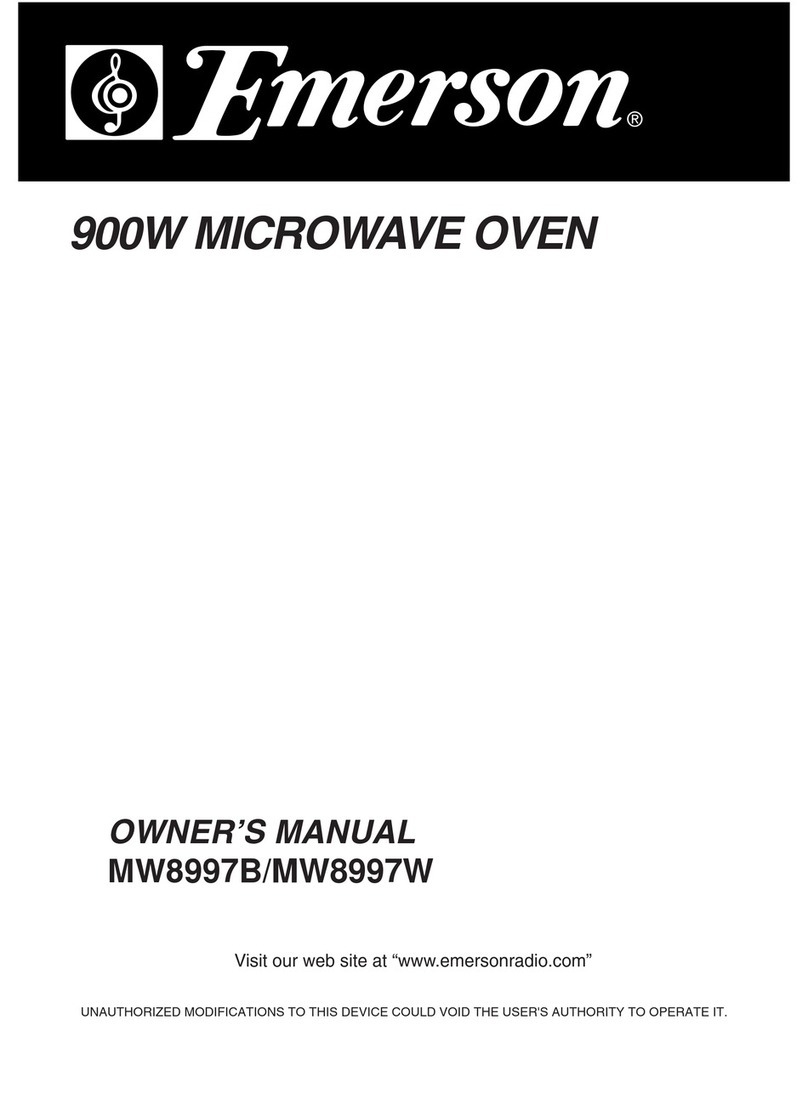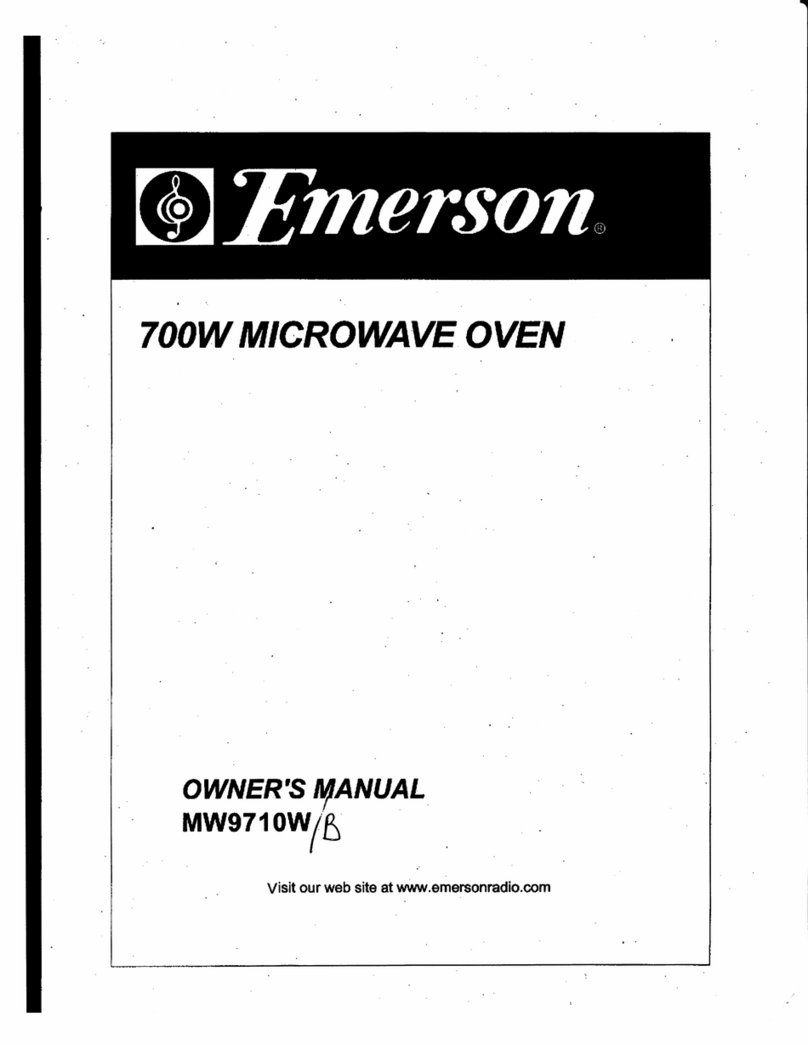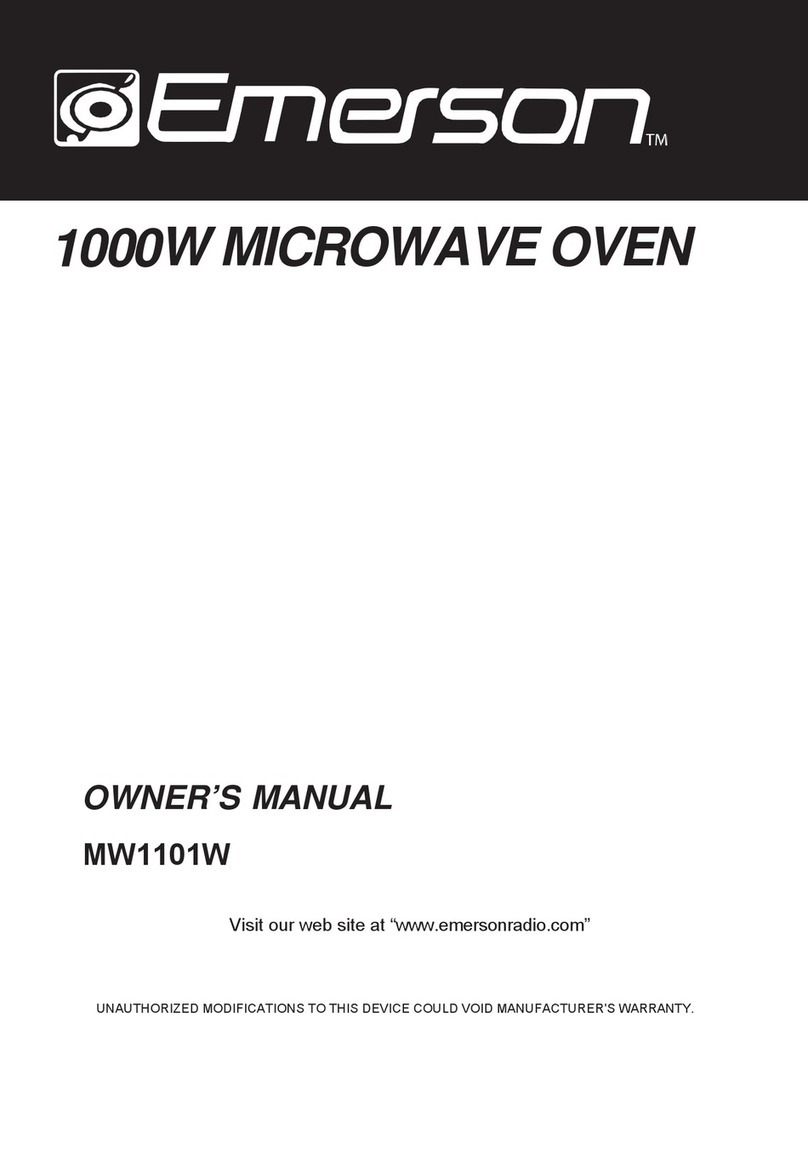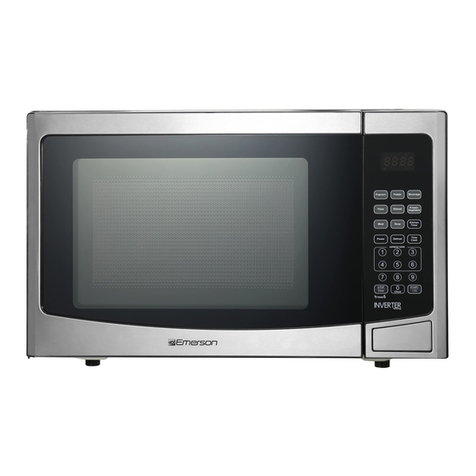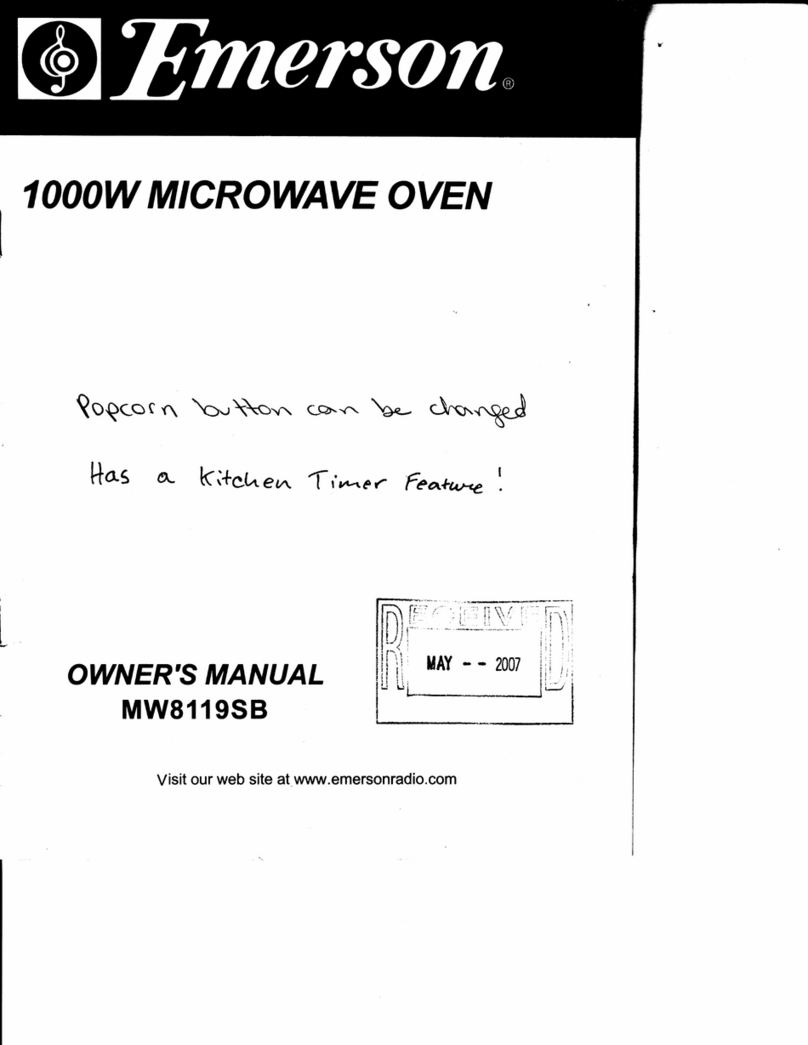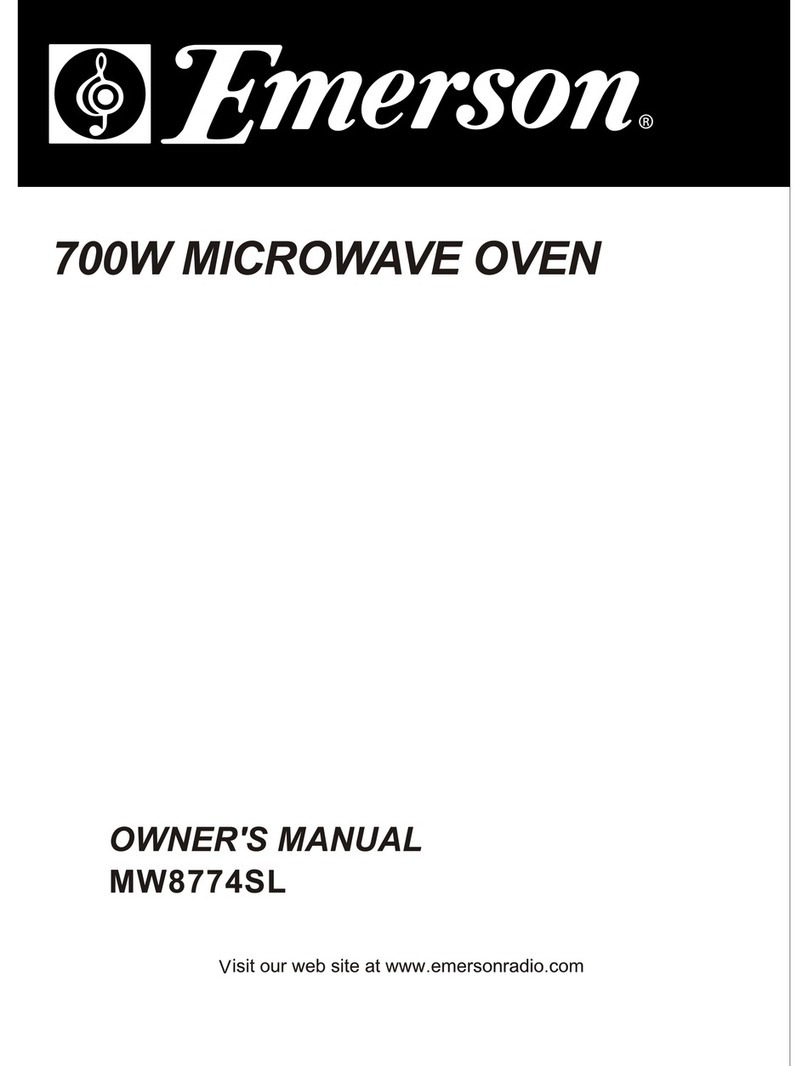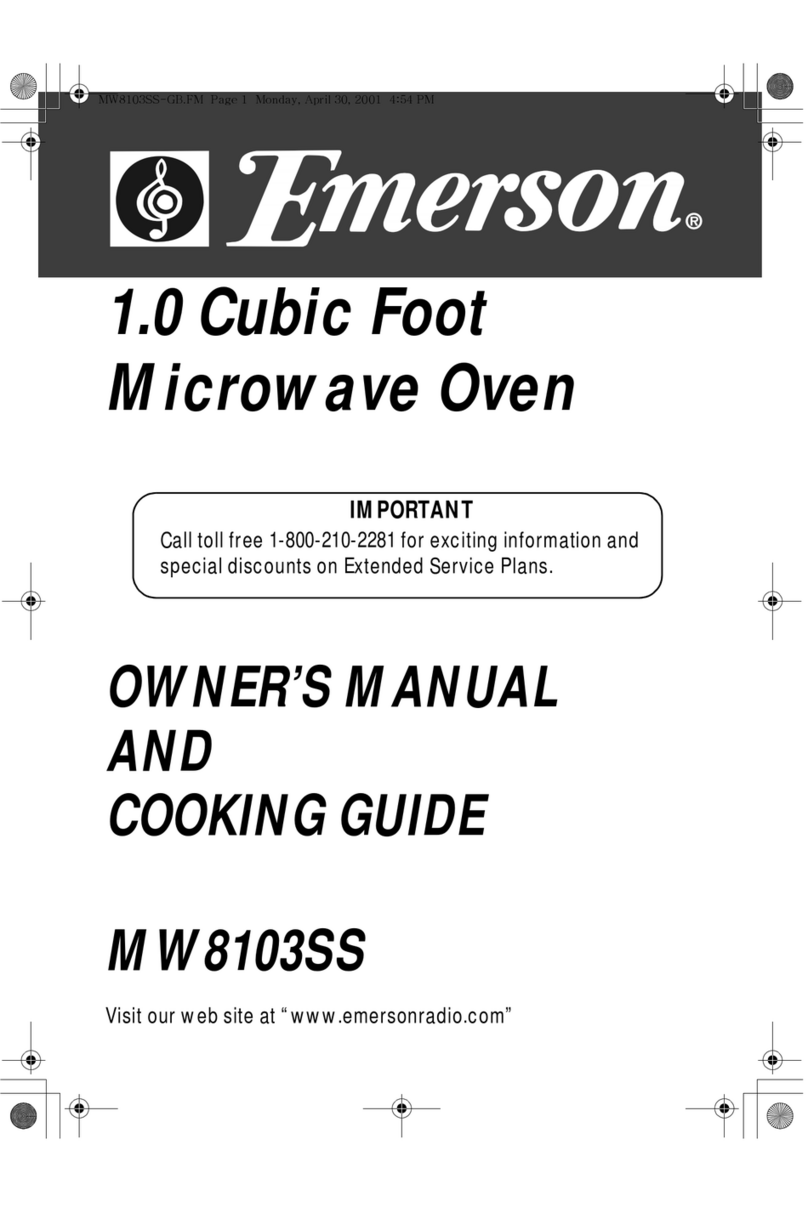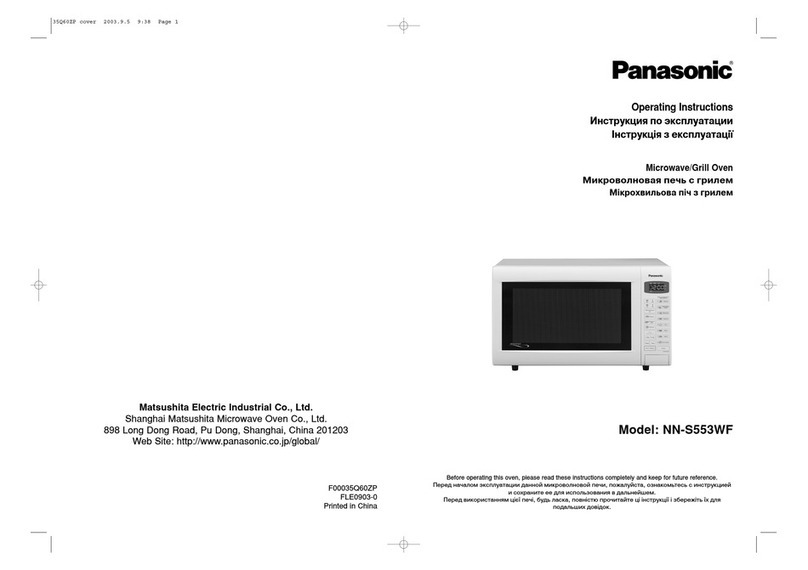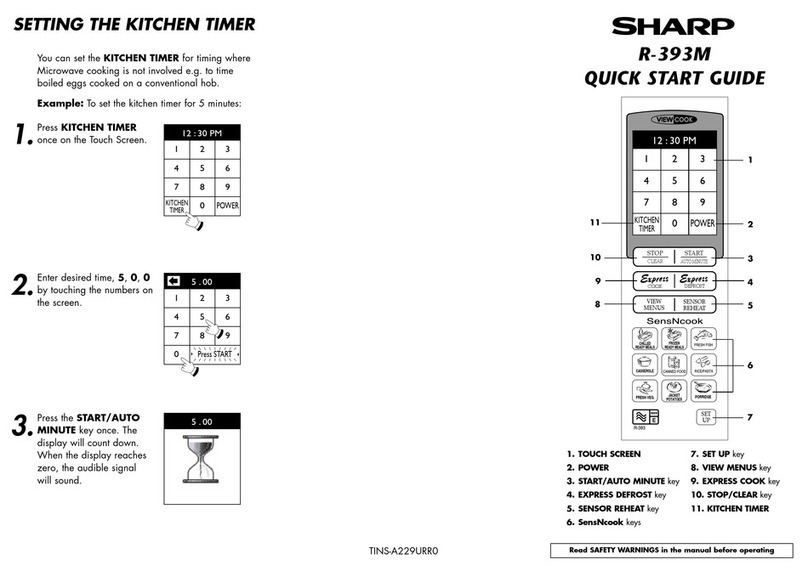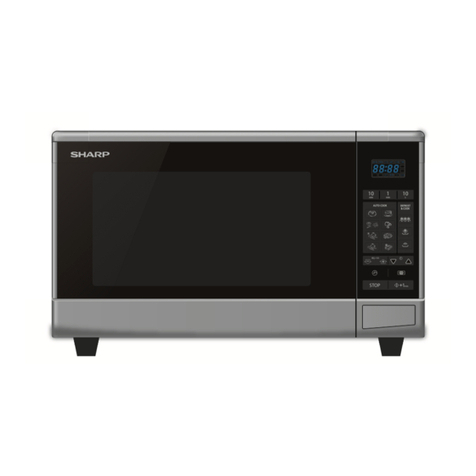
4
(a) Do NOT overcook food. Carefully attend appliance if paper, plastic,
or other combustible materials are placed inside the oven to
facilitate cooking.
(b) Remove wire twist-ties from paper or plastic bags before placing
bag in oven.
(c) If materials inside the oven ignite, keep oven door closed, turn oven
off, and disconnect the power cord, or shut off power at the fuse or
circuit breaker panel.
(d) Do NOT use the cavity for storage purposes. Do NOT leave paper
products, cooking utensils, or food in the cavity when not in use.
17.
Do NOT use this microwave oven to heat corrosive chemicals (for
example, sulfides and chlorides). Vapors from such corrosive
chemicals may interact with the contact and springs of the safety
interlock switches, thereby rendering them inoperable.
18.
Keep the spatter shield (waveguide cover) clean at all times. Wipe the
oven interior with a soft damp cloth after each use. If you leave grease
or fat anywhere in the cavity it may overheat, smoke or even catch fire
when next using the oven.
19.
Liquids, such as water, coffee, or tea are able to be overheated beyond
the boiling point without appearing to be boiling due to surface tension
of the liquid. Visible bubbling or boiling when the container is removed
from the microwave oven is not always present. THIS COULD
RESULT IN VERY HOT LIQUIDS SUDDENLY BOILING OVER WHEN
THE CONTAINER IS DISTURBED OR A UTENSIL IS INSERTED
INTO THE LIQUID. To reduce the risk of injury to persons:
1. Do NOT overheat the liquid.
2. Stir the liquid both before and halfway through heating it.
3. Do NOT use straight-sided containers with narrow necks.
4. After heating, allow the container to stand in the microwave oven
for a short time before removing the container.
5. Use extreme care when inserting a spoon or other utensil into the
container.
General Use
1. Do NOT attempt to tamper with or make any adjustmentsor repairs to door,
control panel or any other part of the oven. Do NOT remove outer panel
from oven. Repairs should only be done by qualified service personnel.
2. Do NOT operate the oven empty. The microwave energy will reflect
continuously throughout the oven if no food or water is present to absorb
energy.
3. If a fire occurs in the oven,touch the Pause/Cancel button and LEAVE THE
DOOR CLOSED. Disconnect the power cord, or shut off power at the fuse
